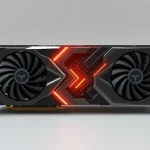Lisa Su addresses AMD Intel deal rumors, easing industry concerns

In recent weeks, speculation has surged regarding a potential partnership between AMD and Intel, a prospect that seemed unthinkable just a few years ago. This speculation was ignited by reports suggesting that AMD might join the ranks of companies investing in Intel, following the footsteps of NVIDIA, SoftBank, and even the U.S. government. However, Lisa Su, the CEO of AMD, responded cautiously, leaving many in the industry pondering the implications of her statements and the future of AMD's relationship with Intel.
Rumors surfaced indicating possible discussions between the two chip designers. However, conflicting reports quickly followed, asserting that such collaboration was unlikely. Amidst this uncertainty, neither company provided clear answers, leaving the market and semiconductor analysts in a state of confusion and concern.
Lisa Su’s Ambiguous Response on AMD and Intel Collaboration
During a recent interview in China, when asked whether AMD would consider utilizing Intel's factories to produce its chips, Lisa Su chose to underscore the company's supply chain strategy. Her statement was careful and strategic, suggesting openness to possibilities without committing to any specific plans:
“As you know, we are very meticulous about everything related to our supply chain. I believe our chain is very solid. We maintain a deep collaboration with TSMC throughout the entire chain. Regarding your previous question, our absolute priority is to manufacture in the United States because I believe that is very important. This is the stack of American Artificial Intelligence, and we want to build as much as possible here.
Su’s words indicate that AMD is comfortable with its current reliance on TSMC, yet recognizes the strategic importance of enhancing its manufacturing presence in the U.S. Notably, Intel manufactures a significant portion of its chips domestically. While she does not dismiss the possibility of collaboration, her cautious approach suggests a complex relationship shaped by both opportunity and competition.
Challenges for Collaboration Between AMD and Intel
Despite the speculation, analysts believe that the likelihood of a direct partnership between AMD and Intel remains low for two primary reasons:
- AMD has a mature and optimized supply chain with TSMC, which meets its current manufacturing needs.
- The intense competition in the CPU market for PCs, laptops, and servers creates inherent conflicts of interest.
Moreover, following recent political movements, the growing interest from various investors in Intel points to motivations that extend beyond mere technology. Analysts have noted that investments from firms like NVIDIA and SoftBank carry a significant political weight, especially since the U.S. government has a direct stake in Intel.
This dynamic adds another layer to the narrative, showing that large tech companies are increasingly looking to strengthen ties with Intel, not just for its technology but also for access to a politically favorable environment. In today’s landscape, politics has become a major factor in business decisions, and companies want to ensure they are aligned with the prevailing political agenda.
The Role of Artificial Intelligence in the Future of Semiconductor Partnerships
As the semiconductor industry evolves, the role of Artificial Intelligence (AI) cannot be overlooked. The integration of AI into various sectors has led to increased demand for robust processing capabilities, which in turn influences the strategies of companies like AMD and Intel. This is where the interplay of technology and politics becomes crucial.
In this context, the possibility of a partnership between AMD and Intel, while currently slim, cannot be entirely ruled out. Factors that could influence future strategies include:
- The ongoing advancements in AI technology.
- The need to respond to competitive pressures from newer entrants in the semiconductor market.
- Government incentives aimed at boosting domestic semiconductor manufacturing.
In light of these developments, Lisa Su’s cautious but open-ended response regarding collaboration with Intel suggests that while immediate partnerships may not be in the cards, the future remains uncertain and full of potential.
Implications for Investors and the Market
The uncertainty surrounding AMD and Intel's potential collaboration has led to mixed reactions in the market. Investors are keeping a close eye on developments, as any formal agreement could significantly alter the competitive landscape of the semiconductor industry. Analysts emphasize the importance of understanding the underlying factors driving these discussions, including:
- The shifting landscape of semiconductor manufacturing.
- The increasing influence of AI on technology investments.
- The geopolitical dynamics affecting major tech companies.
As these factors continue to evolve, the tech community remains vigilant, recognizing that even a hint of collaboration can have wide-ranging implications. The stakes are high, and companies are keenly aware that the future of technology is being shaped by both innovation and strategic partnerships.
For further insights, consider watching the following video that delves into the leadership of AMD and its challenges in a competitive market:
In conclusion, while the discourse around a possible agreement between AMD and Intel remains filled with uncertainties, the significance of their respective strategies in the semiconductor landscape cannot be overstated. The future will likely reveal whether collaboration will emerge as a viable option, but for now, both companies continue to navigate the complexities of competition, innovation, and political influence.




Leave a Reply